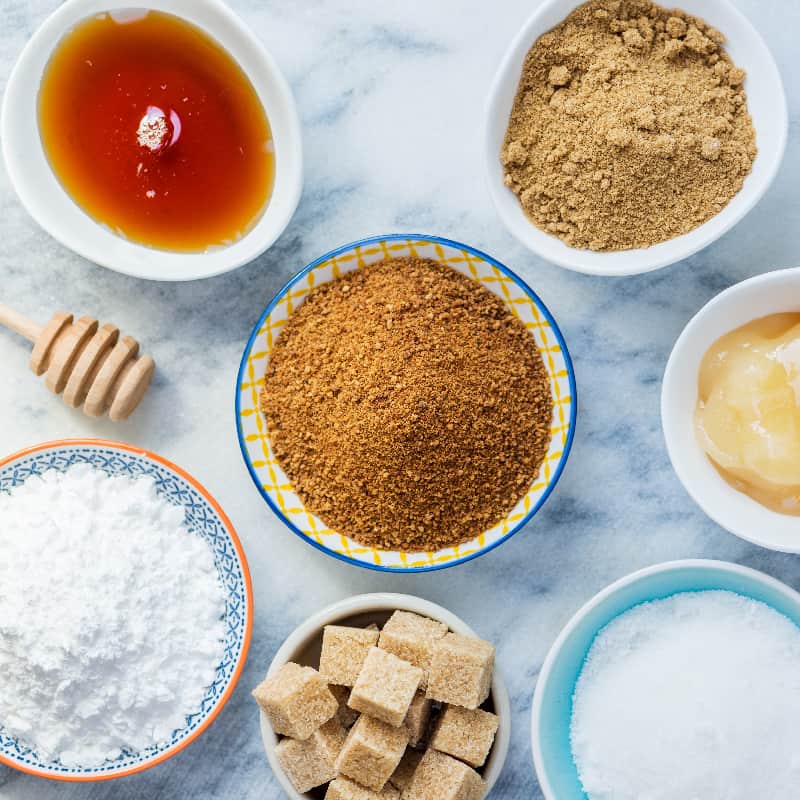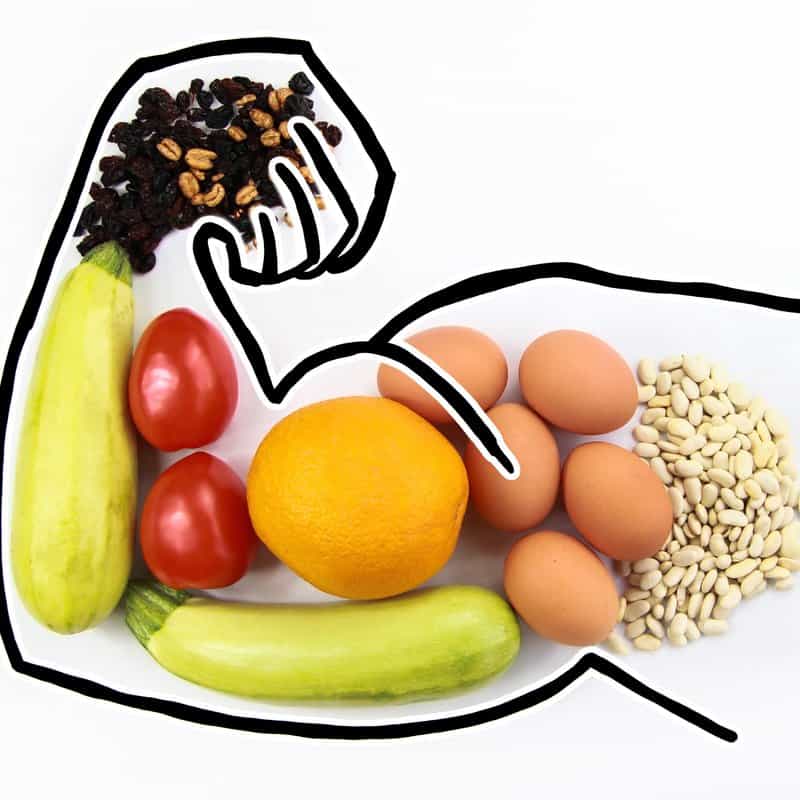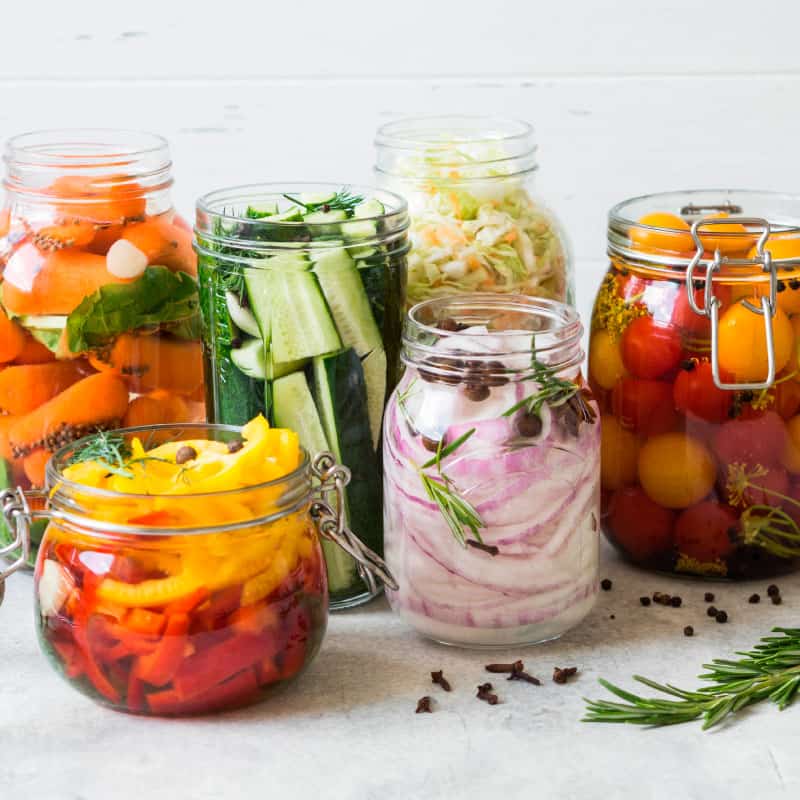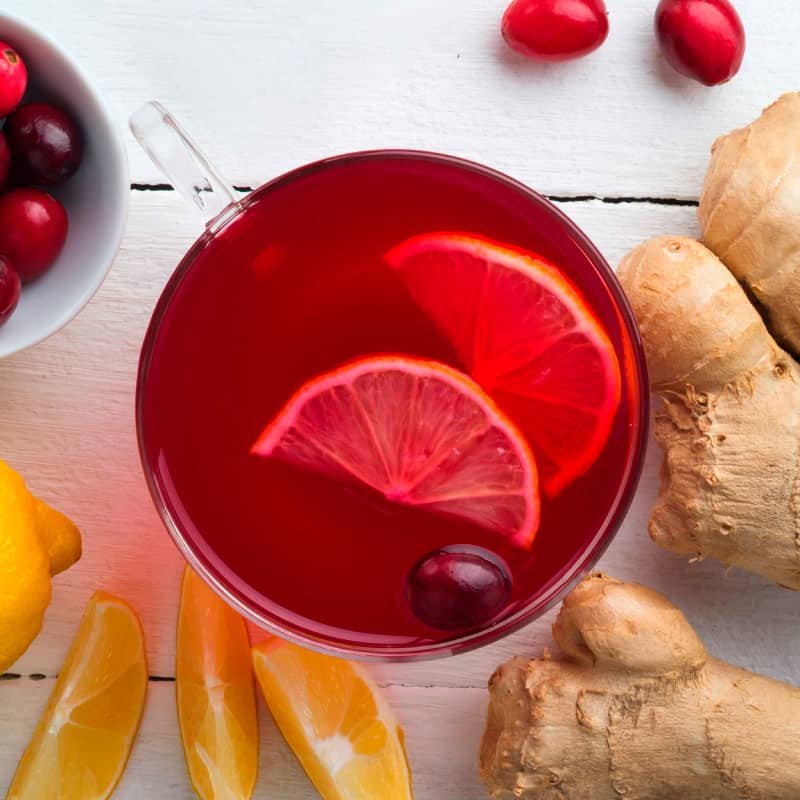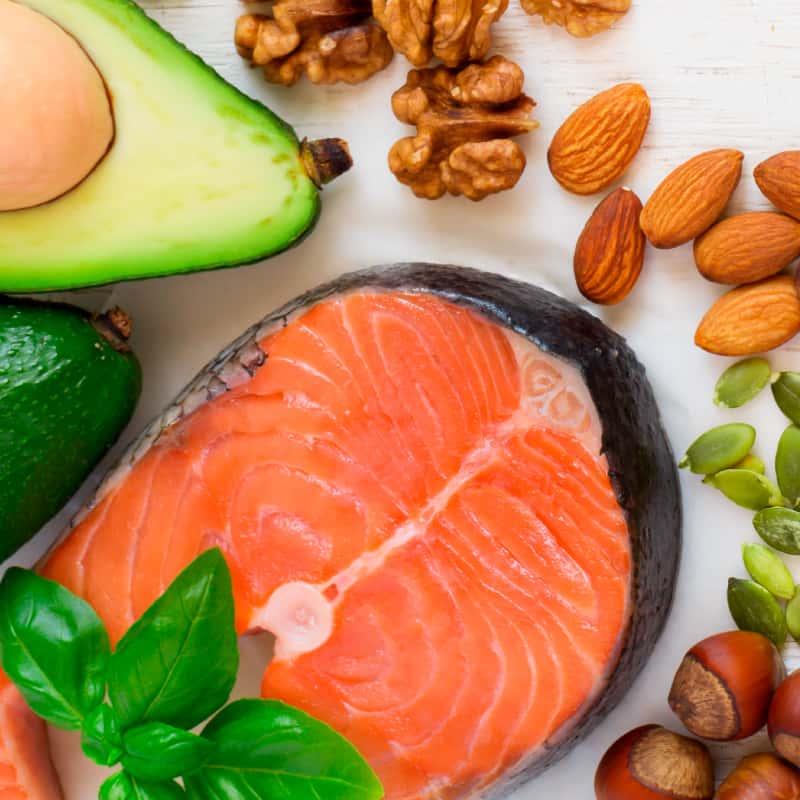This Dr. Axe content is medically reviewed or fact checked to ensure factually accurate information.
With strict editorial sourcing guidelines, we only link to academic research institutions, reputable media sites and, when research is available, medically peer-reviewed studies. Note that the numbers in parentheses (1, 2, etc.) are clickable links to these studies.
The information in our articles is NOT intended to replace a one-on-one relationship with a qualified health care professional and is not intended as medical advice.
This article is based on scientific evidence, written by experts and fact checked by our trained editorial staff. Note that the numbers in parentheses (1, 2, etc.) are clickable links to medically peer-reviewed studies.
Our team includes licensed nutritionists and dietitians, certified health education specialists, as well as certified strength and conditioning specialists, personal trainers and corrective exercise specialists. Our team aims to be not only thorough with its research, but also objective and unbiased.
The information in our articles is NOT intended to replace a one-on-one relationship with a qualified health care professional and is not intended as medical advice.
Pumpkin Spice Benefits You Can Enjoy Year-Round
October 3, 2025
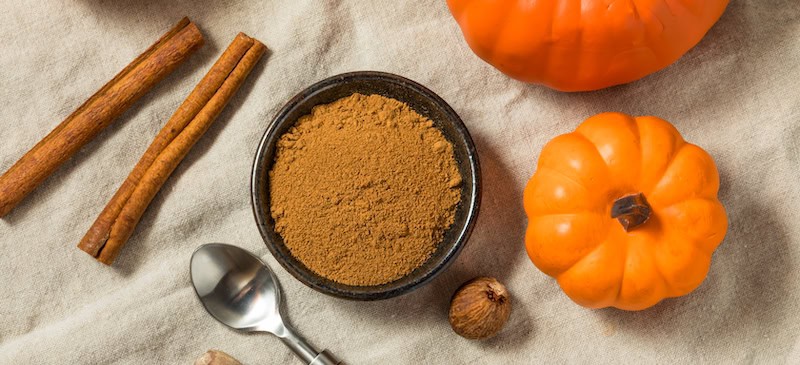
As the crisp air of autumn rolls in, pumpkin spice returns to everything from lattes to oatmeal, candles and baked goods. But beyond its cozy aroma and seasonal appeal, pumpkin spice isn’t just a flavor fad; the blend of warming spices it contains may offer real health-supporting benefits.
In this article, we’ll dig in to what pumpkin spice really is, its nutrition profile, the scientifically supported benefits, how to use it in your kitchen, possible risks or side effects, and answers to common questions. Let’s explore how this nostalgic flavor can serve your health year-round.
What is pumpkin spice?
“Pumpkin spice” (or “pumpkin pie spice”) is not pumpkin at all. It’s a spice blend carefully combined to evoke the flavor of pumpkin pie without using pumpkin flesh.
“Pumpkin spice” is not a single ingredient, but rather a harmonious blend of commonly used spices. While formulation varies slightly from brand to brand, the classic pumpkin spice mix typically includes:
Some blends may also include cardamom or mace, but the five spices above are the core.
The name “pumpkin spice” comes from its frequent pairing with pumpkin-based recipes, like pies, breads and lattes, not because it inherently contains pumpkin.
When you use pumpkin spice, you are harnessing the compounds found in these spices, such as cinnamaldehyde, gingerols, eugenol and others, which have been studied for antioxidant and anti-inflammatory actions (and more).
Because it’s a spice blend, its health effects come from its constituent spices rather than from a mysterious “pumpkin spice” molecule. That said, when used wisely, pumpkin spice can boost flavor and wellness together.
Each spice brings its own phytonutrients, volatile oils and bioactive compounds. For example, cinnamon contributes cinnamaldehyde, and cloves offer eugenol, while ginger contributes gingerols and shogaols.
Commercial blends vary, but that core set is consistent. In the U.S., pumpkin spice becomes ubiquitous in cafes, baked goods, smoothies and, of course, the iconic pumpkin spice latte.
Nutrition facts
Because pumpkin spice is used in small amounts (a teaspoon or less), its macronutrients are minimal. Still, here’s a typical snapshot for one teaspoon of commercial pumpkin spice blend:
| Metric | Approximate Value* |
|---|---|
| Calories | ~ 5.8 kcal |
| Carbohydrates (including fiber) | Very low |
| Fat | Negligible |
| Vitamins & Minerals | Trace amounts; one teaspoon may provide ~12%-13% of Daily Value for manganese |
*Note: exact values depend on the specific proportions of spices and whether the mix has added sugar, fillers, etc.
According to the U.S. Department of Agriculture, a one-teaspoon serving of pumpkin spice (about 1.7 grams) contains approximately:
- Calories: 5.8
- Total Carbohydrates: 1.2 g
- Fiber: 0.3 g
- Sugar: 0.1 g
- Total Fat: 0.2 g
- Saturated Fat: 0.1 g
- Polyunsaturated Fat: 0.01 g
- Monounsaturated Fat: 0.02 g
- Protein: 0.1 g
- Sodium: 0.9 mg (<1% DV*)
- Manganese: 0.3 mg (13% DV)
*Daily Value: Percentages are based on a diet of 2,000 calories a day.
Thanks to the blend of spices, pumpkin spice also contains a little bit of calcium, iron, magnesium, phosphorus, potassium, zinc, copper, selenium, vitamin C, thiamine, riboflavin, niacin, vitamin B6, folate, choline, vitamin A, beta-carotene, lycopene, lutein and zeaxanthin, vitamin E and vitamin K.
While the nutritional content is small, each spice is densely loaded with bioactive phytochemicals (antioxidants, volatile oils, polyphenols) that carry much of the physiological benefit.
Because the actual caloric or macronutrient burden is negligible, pumpkin spice is best seen as a functional seasoning, a flavorful enhancer that may confer health perks beyond its taste.
Keep in mind: Most of the calories, sugar and fat in “pumpkin spice” foods (like lattes or muffins) come from added sugar, dairy, syrups and fats, not the spice blend itself.
Benefits
Below are scientifically informed benefits of pumpkin spice ingredients. Keep in mind that much of the evidence comes from studies on the individual spices rather than the blend itself.
Still, when you use the blend moderately and consistently, you may enjoy these effects.
1. May reduce oxidative stress and support antioxidant activity
The spices in pumpkin spice, especially cinnamon, cloves and nutmeg, are rich in potent antioxidant compounds (polyphenols, flavonoids, eugenol, etc.). These antioxidants help neutralize free radicals, protect cellular integrity and may reduce the cumulative oxidative burden on tissues.
In practical terms, this could support long-term health and resilience against chronic disease pathways that are driven by oxidative damage.
The polyphenols, flavonoids and other antioxidant compounds also support DNA integrity and promote cellular health.
Chronic oxidative stress is implicated in aging, neurodegeneration and chronic disease. Regular inclusion of antioxidant spices is a tactical, low-risk way to bolster defense systems.
2. Supports a healthy inflammatory response
Chronic, low-grade inflammation is now recognized as a root of many illnesses, from cardiovascular disease to metabolic syndrome. Many of the spice constituents in pumpkin spice, such as cinnamaldehyde (in cinnamon), eugenol (in cloves) and gingerols (in ginger), have been shown in lab studies to modulate inflammatory signaling, reduce pro-inflammatory mediators and support immune balance.
These compounds may inhibit NF-κB and COX enzymes, reducing chronic inflammation linked to aging, metabolic disease and cardiovascular risks.
Thus, regular consumption (in culinary doses) may help your body maintain a healthier baseline inflammatory tone.
3. Helps regulate healthy blood sugar
Cinnamon is among the most thoroughly studied spices for glycemic control. Some trials suggest cinnamon can help reduce fasting blood glucose and HbA1c in individuals with type 2 diabetes.
Cinnamon also can help improve insulin sensitivity, modestly lower fasting blood glucose and blunt post-meal spikes (especially in people with insulin resistance).
Additionally, ginger and cloves have been preliminarily shown to complement metabolic balance. Ginger and cloves also show promising effects for enhancing insulin sensitivity or slowing carbohydrate digestion.
While pumpkin spice isn’t a treatment for diabetes, using it in place of sweeter, sugary flavoring can help shift your glycemic load downward, especially compared to many “pumpkin spice” commercial products that are loaded with sugar. Incorporating it as part of an anti-inflammatory, low glycemic diet may help blunt glucose spikes from high-carb meals.
4. Aids digestion and gut comfort
Several of the spices within pumpkin spice have long histories as digestive aids. Ginger, for instance, is well known for easing nausea, reducing bloating, speeding gastric emptying and calming the gut motility.
Cloves, allspice, nutmeg and cinnamon also have carminative (gas-relieving) and antimicrobial properties that can support digestive comfort. In fact, they’ve all been used traditionally for digestion and to reduce intestinal gas.
In the case of pumpkin spice, their low-dose effects may help support gastrointestinal comfort in sensitive individuals. By gently stimulating digestion and reducing gas or heaviness, pumpkin spice can be a useful tool in recipes or herbal teas.
5. Promotes immune system support
Some compounds in the spices, such as eugenol, cinnamaldehyde and gingerols, have displayed antimicrobial or immune-modulating effects in laboratory studies. For example, cloves have antibacterial potential, while cinnamon and ginger have shown antiviral and immunoregulatory effects in vitro.
These may help your body maintain a balanced defense, especially during seasonal transitions.
Meanwhile, by reducing inflammation and oxidative stress, pumpkin spice may indirectly support immune resilience. (Of course, it’s not a substitute for proper nutrition, sleep or medical care.)
6. May encourage healthy mood and cognitive function
The aromas from and phytochemicals in the spices (especially nutmeg and cinnamon) have been associated in preliminary research with neuroprotective, mood-supporting or cognitive-enhancement effects. For example, nutmeg contains compounds that may reduce oxidative stress in brain tissue or interact with neurotransmitter systems.
By helping modulate oxidative stress, inflammation and metabolic stability, pumpkin spice may contribute to a brain-friendly dietary environment.
7. May help protect heart health
Because of their anti-inflammatory and antioxidant actions, plus possible effects on glycemic and lipid metabolism, the spices may help protect cardiovascular health. Some evidence indicates that cinnamon can modestly lower LDL cholesterol or triglycerides in certain populations, for instance.
Additionally, a randomized, single-blinded, crossover clinical trial involving adults who were overweight or obese tested meals high in fat and carbohydrates that included either just salt and pepper (control) or one of three herb/spice combinations: an “Italian herb” mix, cinnamon or a pumpkin-pie spice mix (which contained cinnamon, ginger, nutmeg and allspice).
Researchers found that the pumpkin-pie spice meal significantly increased flow-mediated dilation after 24 hours compared to the control meal, indicating improved endothelial function (a measure of vascular health), which is protective for the heart.
8. Can aid healthy weight management
Since the spices in this popular blend aid metabolic function and provide powerful phytonutrients with an extremely low calorie count, consuming pumpkin spice can support healthy weight.
In a randomized, double-blind, placebo-controlled clinical trial in women with polycystic ovary syndrome (PCOS) published in Frontiers in Nutrition, researchers tested the effects of cinnamon and ginger (two major components of pumpkin spice) on several markers. Consuming those two spices led to significant reductions in weight and body mass index (BMI) over eight weeks in subjects.
In the study, women receiving cinnamon (500 milligrams three times a day) had significant decreases in weight and BMI versus baseline, along with improved insulin resistance compared to placebo.
How to use
Pumpkin spice is remarkably versatile. Here are tips and recipe ideas to integrate it into your daily life.
How to choose or make a quality blend
- Look for simple ingredients. Avoid blends with added sugar, artificial flavorings or fillers.
- Use true spices, not extracts. Ground whole spices retain more of the volatile compounds.
- Store properly. Keep your pumpkin spice blend in a sealed, dark, cool container to preserve its potency.
If you prefer to make your own, a classic mix might be:
- 3 tablespoons ground cinnamon
- 2 teaspoons ground ginger
- 2 teaspoons ground nutmeg
- 1.5 teaspoons ground cloves
- 1.5 teaspoons ground allspice
Adjust ratios to your taste. Store in an airtight jar.
Recipes
Here are ways to incorporate pumpkin spice into your diet (with a wellness mindset):
- Pumpkin spice overnight oats. Combine oats, milk (or plant milk), a dollop of pumpkin purée, ½ to 1 teaspoon pumpkin spice, chia seeds, and optional natural sweetener. Let it sit overnight in the fridge.
- Pumpkin spice smoothie. Blend pumpkin purée or cooked pumpkin, banana, milk or yogurt, a dash of pumpkin spice, and ice.
- Warm beverage booster. Stir pumpkin spice into coffee, tea or golden milk instead of sugary syrups.
- Spiced roasted vegetables. Toss squash, sweet potatoes, carrots and/or Brussels sprouts with a bit of olive oil and a pinch of pumpkin spice (plus salt and pepper) before roasting.
- Pumpkin spice granola or energy bites. Use the spice in granola, nut bars or snack balls to elevate flavor naturally.
- Baked goods. Add to muffins, pancakes, breads and cookies, but reduce other sugars to keep things balanced.
Here are a few more pumpkin pie spice recipes to try:
By leaning into whole-food recipes and minimizing refined sugar additions, you allow the healthful properties of the spices to shine rather than being masked by sweetness.
Risks and side effects
While pumpkin spice is generally safe for culinary use, there are a few caveats to keep in mind:
- Excessive intake. Consuming very high amounts of cinnamon (especially cassia) can expose you to coumarin, which in large doses can strain the liver.
- Gastrointestinal discomfort. In sensitive individuals, spices like ginger or cloves may cause irritation, heartburn or upset stomach if used in large doses.
- Allergies or sensitivities. Some people may react to nutmeg, cloves or other spices with allergic or intolerance responses.
- Drug interactions. Spices may interact with certain medications (e.g., blood thinners, diabetes medications). If you have health conditions or take prescription drugs, consult your healthcare provider before high-dose use.
- Overreliance as “medicine.” Pumpkin spice is a supportive tool, not a substitute for medical care. Don’t assume blankets of spice will “cure” disease.
- Nutmeg toxicity. In very high doses, nutmeg contains myristicin, which can cause nausea, dizziness, hallucinations or toxicity. But you’d need to consume excessive amounts (many teaspoons) for risk to arise.
Used as part of a balanced diet, however, pumpkin spice is low-risk for most healthy individuals.
Frequently asked questions
Does pumpkin spice contain pumpkin?
No, pumpkin spice (or pumpkin pie spice) is a blend of ground spices that mimic pumpkin pie flavor, but it contains no pumpkin flesh.
Is pumpkin spice the same as pumpkin pie spice?
They are nearly the same. Pumpkin pie spice typically includes the same core spices (cinnamon, nutmeg, ginger, cloves, allspice). Some pie spice blends may have slightly different ratios or include additional warm spices, like mace or cardamom.
Can pumpkin spice help with weight loss?
Pumpkin spice is very low in calories, so it doesn’t provide a “negative calorie” effect. However, because the spices may slightly support metabolism, glycemic balance and satiety when replacing sugary flavorings, they can be a small tool in a broader approach to healthy weight management.
How much pumpkin spice should I use daily?
There’s no established therapeutic dose. For most people, using ½ to 1 teaspoon per day, spread across meals or drinks, is a reasonable culinary amount that still taps in to the benefits without overdoing it.
Does pumpkin spice help you sleep?
This has not been directly proven. However, warm spices are often associated with comfort, relaxation and improved mood, which may help your nighttime routine. Some people find that the aroma and ritual of a spiced drink in the evening supports winding down.
Can children use pumpkin spice?
Yes, in food amounts it’s generally safe. But for toddlers or infants, avoid excessive spice or strong blends. Always monitor for sensitivities or reactions.
Is pumpkin spice good for blood sugar?
Certain spices in the blend (especially cinnamon and to a lesser degree ginger and cloves) have been studied for glycemic benefits. While pumpkin spice is not a cure, it may help blunt spikes when used as part of a balanced diet.
Can I take pumpkin spice as a supplement?
There are spice-based supplement or extract products, but they are more intense than culinary spice. Always consult a healthcare provider before using high-dose extracts.
How long does spice potency last?
Ground spices lose potency over time. They usually last 12-18 months in a cool, dry, dark cupboard. If your pumpkin spice smells faint or lacks aroma, it’s time to refresh.
Can I use pumpkin spice year-round?
Absolutely! Don’t let it be just a fall novelty. Use it in cozy drinks, savory squash dishes, breakfast bowls and baked goods across seasons.
Conclusion
- Pumpkin spice is more than just a seasonal trend; it’s a flavorful blend packed with bioactive compounds that, when used wisely, may support antioxidant defenses, healthy inflammation, digestive comfort, immune resilience, blood sugar balance and even mood.
- While it won’t replace whole vegetables, proteins or clinical treatments, pumpkin spice can be a valuable, warming addition to your wellness toolbox.
- To get the most benefit, choose a clean, additive-free blend (or make your own), use it in wholesome recipes (not overly sugary ones) and enjoy it consistently.
- Over time, that little dash of spice may help your food feel more nourishing and your body more resilient.



